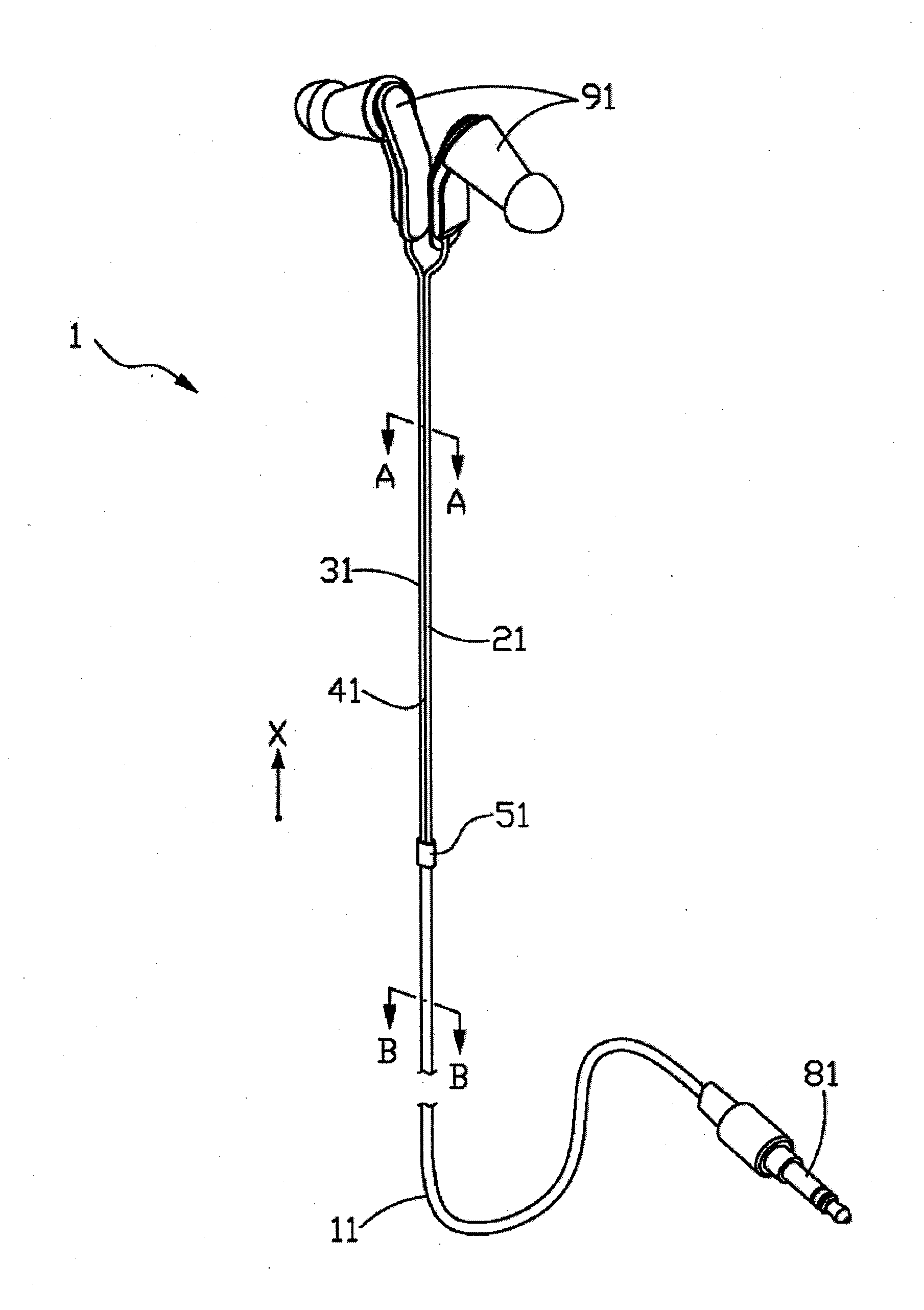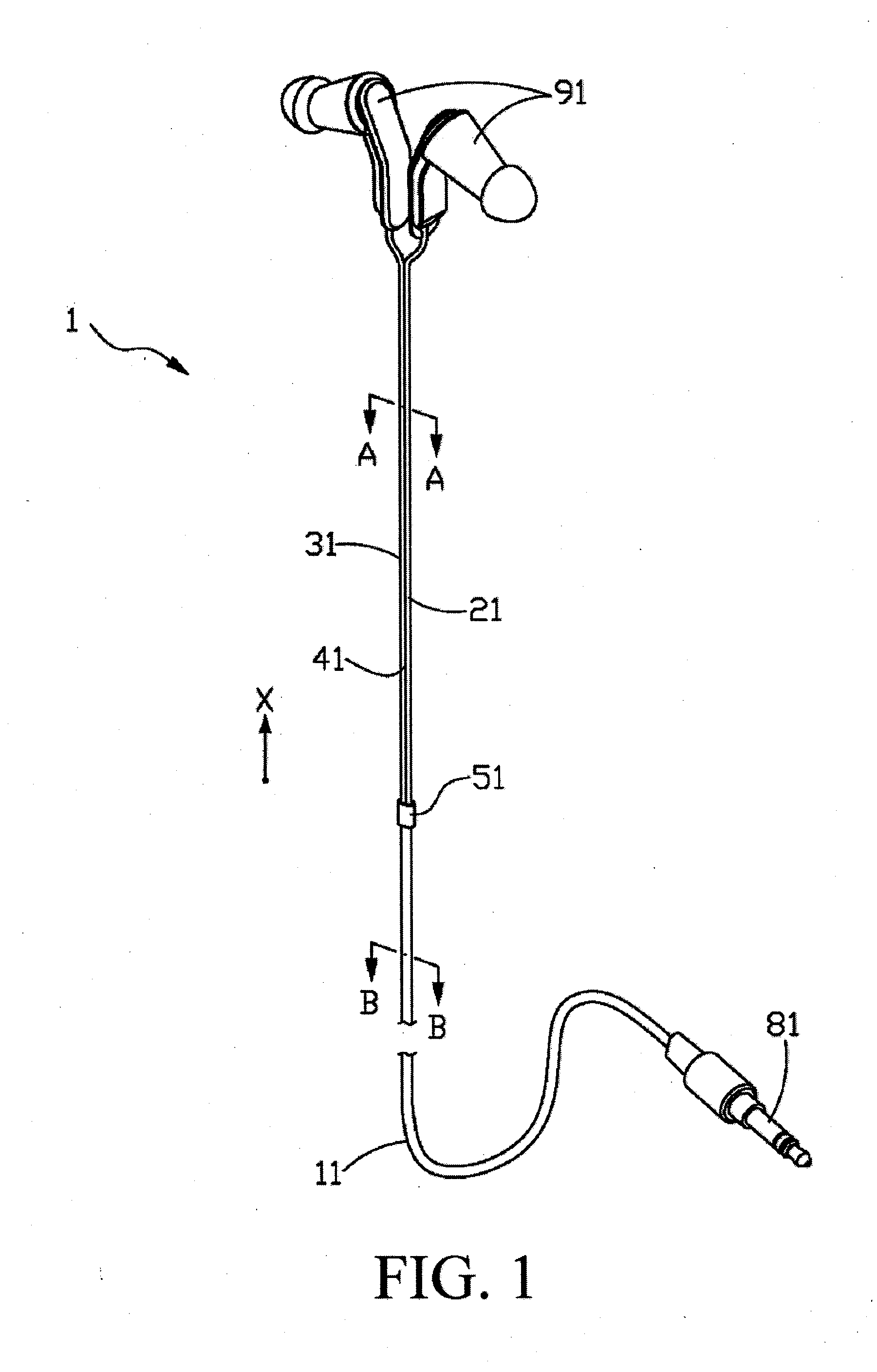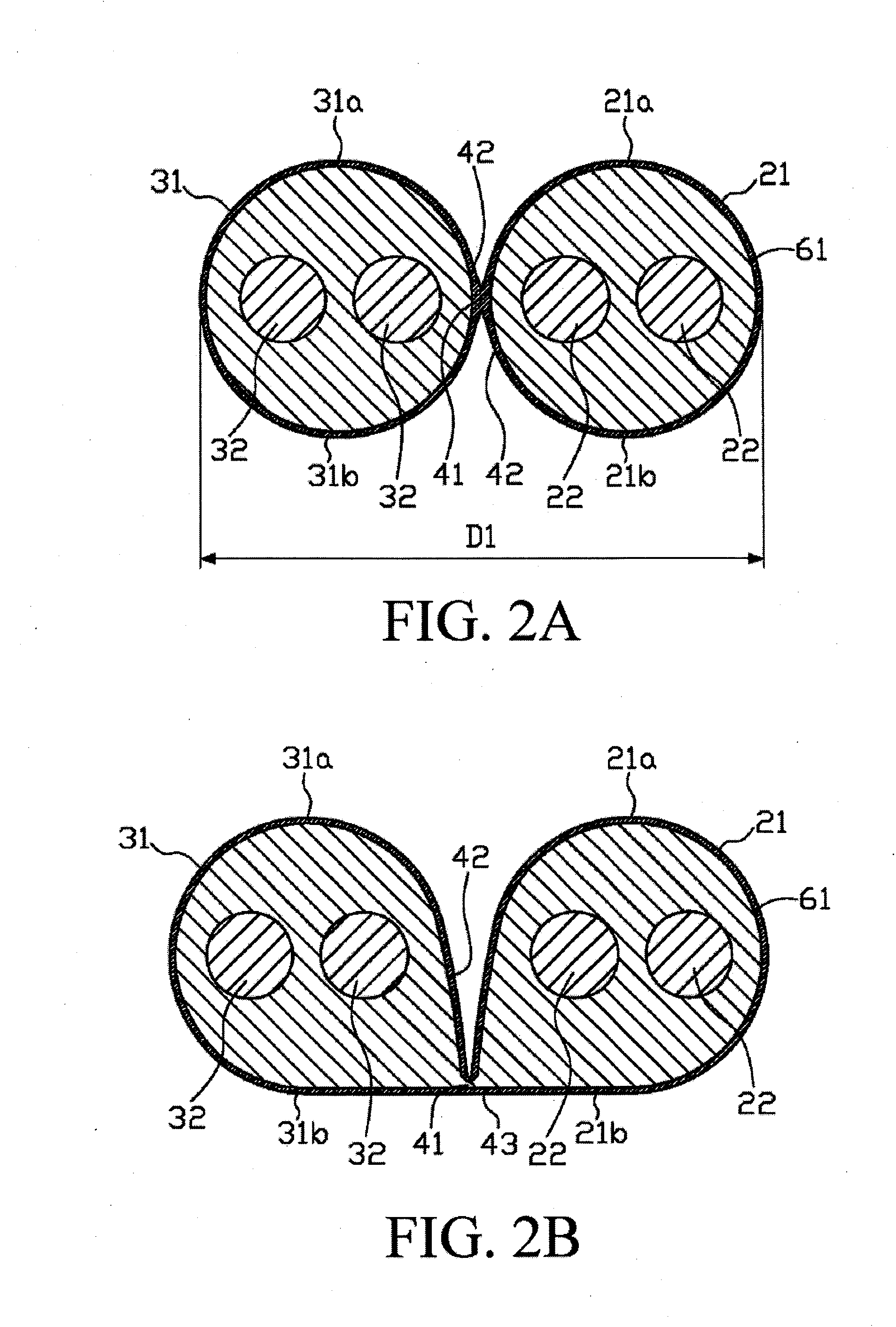Earphone cable structure
a cable structure and earphone technology, applied in the field of cable structure, can solve the problems of increasing the impedance, reducing the total weight of the cable structure, and unable to manufacture two connected branch lines through a machining process once for all to simplify the machining process, so as to reduce the total weight of the earphone cable structure, increase the impedance, and facilitate the disassembly
- Summary
- Abstract
- Description
- Claims
- Application Information
AI Technical Summary
Benefits of technology
Problems solved by technology
Method used
Image
Examples
Embodiment Construction
[0021]FIG. 1 is a schematic outside view of earphone cables according to a first embodiment of the present invention. FIG. 2A is a schematic cross-sectional view of the cross-section A-A in FIG. 1. FIG. 3 is a schematic cross-sectional view of the cross-section B-B in FIG. 1.
[0022]As shown in FIG. 1, FIG. 2A and FIG. 3, an earphone cable structure 1 includes a first connection sleeve 51, a primary cable 11, a first branch cable 21, a second branch cable 31 and a thin-type bridging section 41.
[0023]Please refer to FIG. 1 and FIG. 4, in which the first connection sleeve 51 includes a first end 511 and a second end 512. The first connection sleeve 51 is located between the primary cable 11 and the first branch cable 21 as well as the second branch cable 31, and is made of a plastic material. Here, the cross-sectional width of the first connection sleeve 51 in the direction of the axis X is greater than the cross-sectional width of the primary cable 11 in the direction of the axis X. In...
PUM
 Login to View More
Login to View More Abstract
Description
Claims
Application Information
 Login to View More
Login to View More - R&D
- Intellectual Property
- Life Sciences
- Materials
- Tech Scout
- Unparalleled Data Quality
- Higher Quality Content
- 60% Fewer Hallucinations
Browse by: Latest US Patents, China's latest patents, Technical Efficacy Thesaurus, Application Domain, Technology Topic, Popular Technical Reports.
© 2025 PatSnap. All rights reserved.Legal|Privacy policy|Modern Slavery Act Transparency Statement|Sitemap|About US| Contact US: help@patsnap.com



